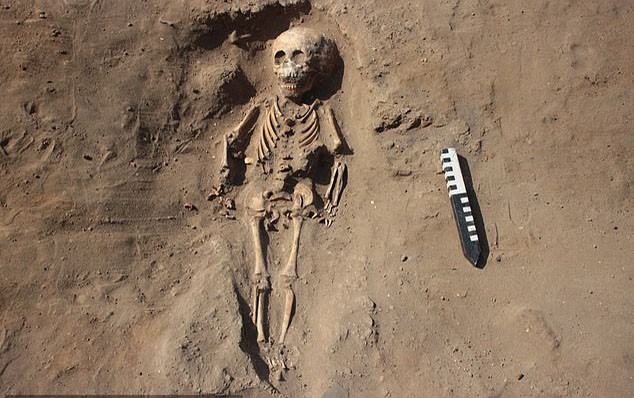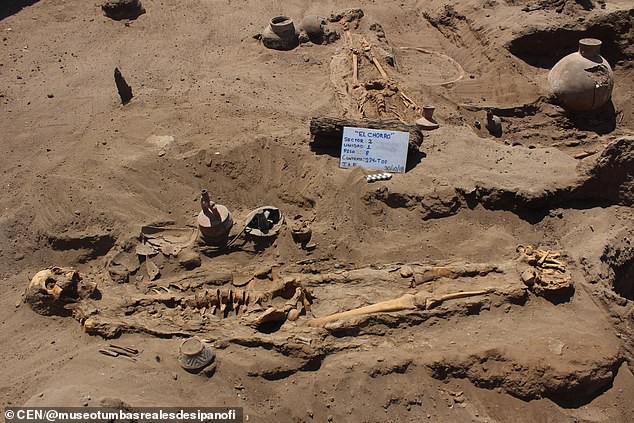Archaeologists have just discovered 32 human skeletons dating back 1,700 years from the Moche and Lambayeque cultures, in Peru. Worth mentioning, half of these people lost their foot bones.
According to Daily Mail , these skeletons , mostly of children, were found in ancient tombs in Pomalca district, Chiclayo province, Peru . Researchers believe that ancient people cut off the feet of the dead and used them as jewelry.

A skeleton of a child missing a foot in Peru. Photo: CEN
This gruesome form is quite common in the Moche and Lambayeque cultures.
Small pieces of foot bone will be made into lockets. Relatives and relatives of the deceased will wear them as jewelry.
In addition, archaeologists also discovered 60 large jars containing the bones of alpacas, llamas and guinea pigs.

Some ancient vases and utensils were found along with human bones. Photo: CEN
Some tombs also have looms and weaving tools made from bones. About 40 ceramic pots – items used daily by ancient families – were also found alongside objects such as metal and spoons made from bones.
The Moche culture developed between 100 and 700 BC (BC) while the Lambayeque culture developed later, in the period 750 -1375 BC. According to Edgar Bracamonte, head of the archaeological project in El Chorro, Chiclayo province, these ancient tombs were built during the late Moche culture to the late Lambayeque culture.
The Moche people are famous for their extremely sophisticated pottery and jewelry. They were also pioneers in metalworking.





